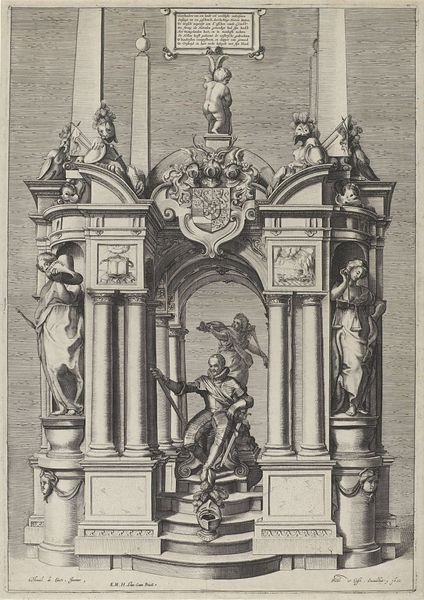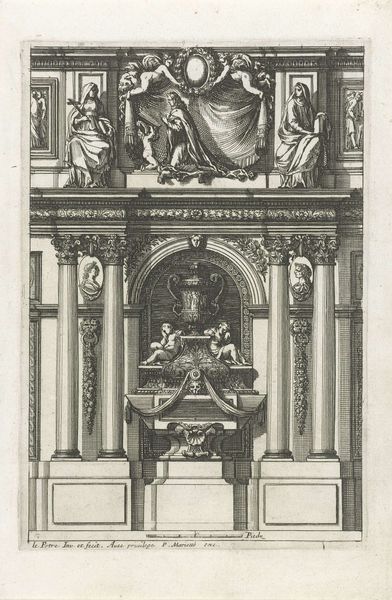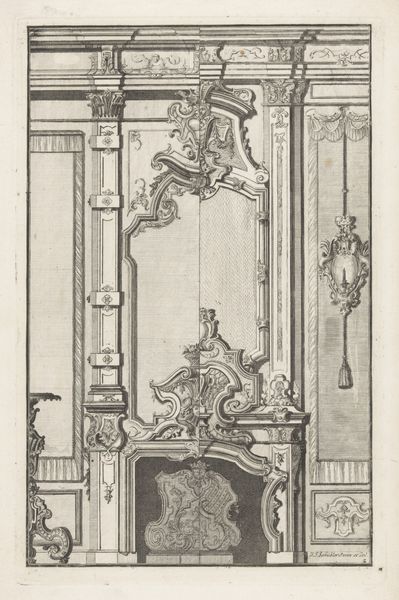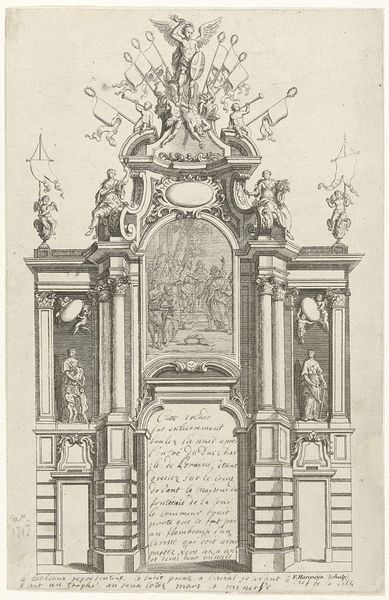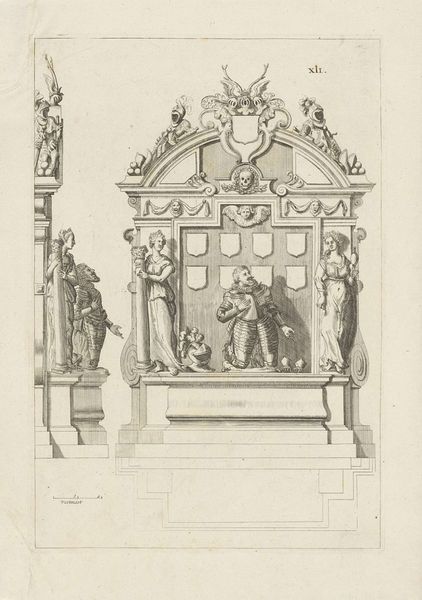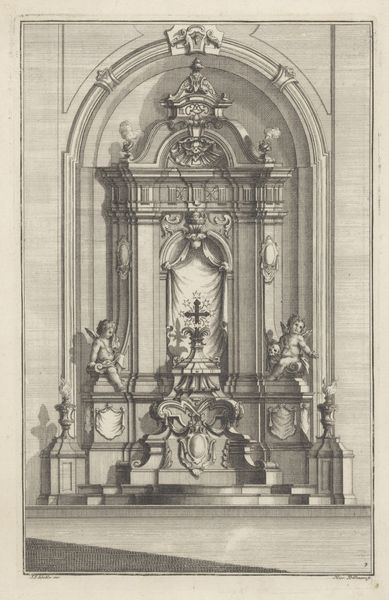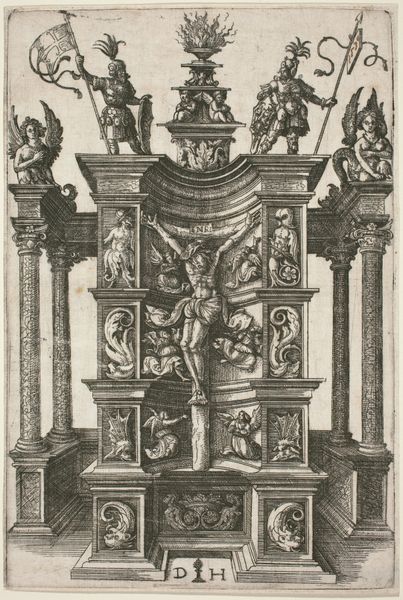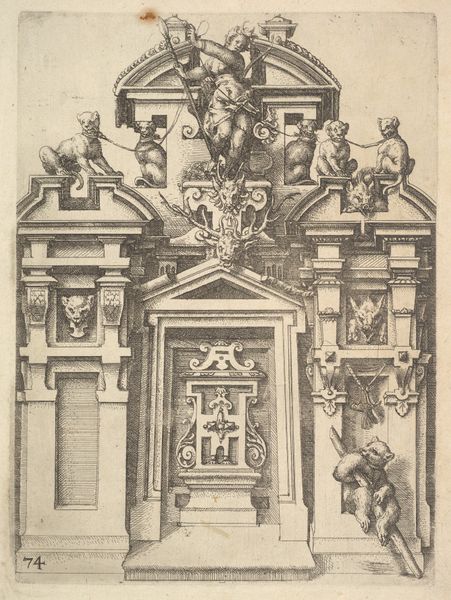
print, engraving, architecture
#
baroque
# print
#
figuration
#
history-painting
#
engraving
#
architecture
Dimensions: height 335 mm, width 216 mm
Copyright: Rijks Museum: Open Domain
This print from 1623 depicts the tomb of William I, Prince of Orange, and it offers us insight into the public role of imagery in the Dutch Republic. As a posthumous depiction, this print idealizes William as a classical hero with a distinctly Protestant bent. Notice the architecture, inspired by classical antiquity, and the allegorical figures of Justice and Religion, framing scenes from his life. It creates meaning through visual codes, cultural references, and historical associations. This image reflects the social and political context of the Dutch Golden Age: a time of prosperity, religious reformation, and struggle for independence from Spain. As such, the image becomes deeply entwined with the politics of imagery, and the formation of national identity. By researching period documents and publications, we can better understand the complex interplay between art, politics, and public opinion in the Dutch Republic.
Comments
No comments
Be the first to comment and join the conversation on the ultimate creative platform.
